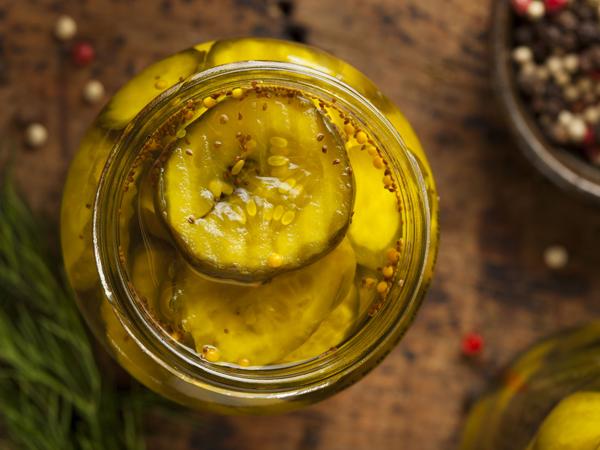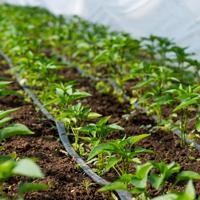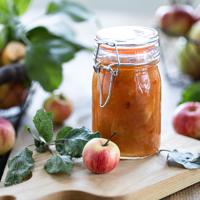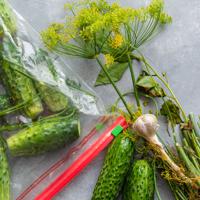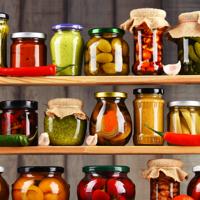Welcome to the vibrant world of fermentation! If you’ve been curious about the tangy taste of kimchi or the effervescence of a home-brewed kombucha, you’re not alone. Fermenting foods can be a rewarding foray into preserving seasonal produce and creating novel flavors.
This guide aims to help you understand the fundamentals of fermentation and provides a gentle push into this fascinating culinary landscape.
What is Fermentation?
Fermentation is a natural metabolic process that involves converting sugars into acids or alcohol using microorganisms like bacteria, yeast, or fungi. This process occurs under anaerobic conditions, meaning it happens in the absence of air.
People have been fermenting foods for thousands of years, long before refrigeration. Fermented foods are not just tasty but can also be a means of preserving food, making certain foods more digestible, and potentially enriching them with probiotics.
Why Ferment Food?
You might consider fermenting foods for several reasons:
- Flavor & Culinary Diversity: Fermentation offers a unique depth of flavor that’s hard to replicate using other culinary methods.
- Preservation: Fermented foods have a longer shelf life than their raw counterparts.
- Probiotics: While more research is needed, some studies have suggested that fermented foods might contain beneficial probiotics.
- Sustainability: Fermenting at home can help reduce food waste by preserving extra produce that might otherwise be discarded.
Getting Started
Basic Equipment
Setting up for fermentation doesn’t require much. Most tools are likely already in your kitchen. Here are a few common items:
- Clean glass jars or fermentation crocks
- Cheesecloth or a linen towel
- Rubber bands or strings to secure the cloth
- A weight to keep the food submerged (a small plate or a cleaned stone can work)
- A measuring spoon and cups
Ingredients
- Fresh produce: Choose vegetables or fruits that are fresh and free from blemishes.
- Salt: Sea salt or kosher salt is preferred as they don’t contain additives that could interfere with fermentation.
- Water: Use chlorine-free water to prevent killing the bacteria necessary for fermentation.
Basic Fermentation Process
Here’s a simple vegetable fermentation process you can follow:
-
Preparation: Clean your jars and tools with hot soapy water. Ensure everything is fully rinsed.
-
Choose Your Vegetables: Cabbage, carrots, and cucumbers are good starters.
-
Salt Brine: Dissolve salt in water to create a brine. A good starting point is about 3 tablespoons of salt per quart (about a liter) of water.
-
Packing: Slice your vegetables and pack them tightly into the jar. Leave about an inch of headspace. Pour the brine over the vegetables, ensuring they’re fully submerged.
-
Weigh Down and Cover: Place a weight on top of the vegetables to keep them submerged. Cover with the cheesecloth and secure it with a rubber band or string.
-
Fermentation Time: Allow the jar to sit at room temperature away from direct sunlight. Fermentation times can vary but start checking after a few days. Taste occasionally until the desired flavor and texture is reached, usually between 1-4 weeks.
-
Storage: Once fermented to your liking, transfer the jars to the refrigerator to slow the fermenting process.
Some Simple Fermentation Recipes
Sauerkraut
One of the simplest and possibly most well-known fermented foods. Chop cabbage, massage it with salt until it releases its liquid, and pack it firmly into a jar.
Pickled Carrots
Cut carrots into sticks, place in a jar, and cover with a saltwater brine. You can add garlic, dill, or spices for additional flavor.
Kimchi
For a bit more complexity, try kimchi. It’s typically made with cabbage, carrots, green onions, ginger, garlic, and Korean chili flakes. All are mixed and packed tightly, then left to ferment.
Suggested Reading
- “The Art of Fermentation” by Sandor Ellix Katz provides a wider perspective on the history and practice of fermentation.
- Research from “Frontiers in Microbiology” has discussed the potential health benefits of fermented foods.
Conclusion
Fermenting foods at home can be an exciting venture into the world of culinary and sustainable living. Remember, fermentation can occasionally be unpredictable. It’s fine to experiment and make mistakes—a small taste of the process itself. Always trust your senses; if something smells off, it’s better to be safe.
By taking small steps into fermentation, you can enjoy homemade flavors that may make you appreciate our food’s rich tapestry much deeper. Welcome to the journey into the ancient and ever-renewing art of fermentation!
